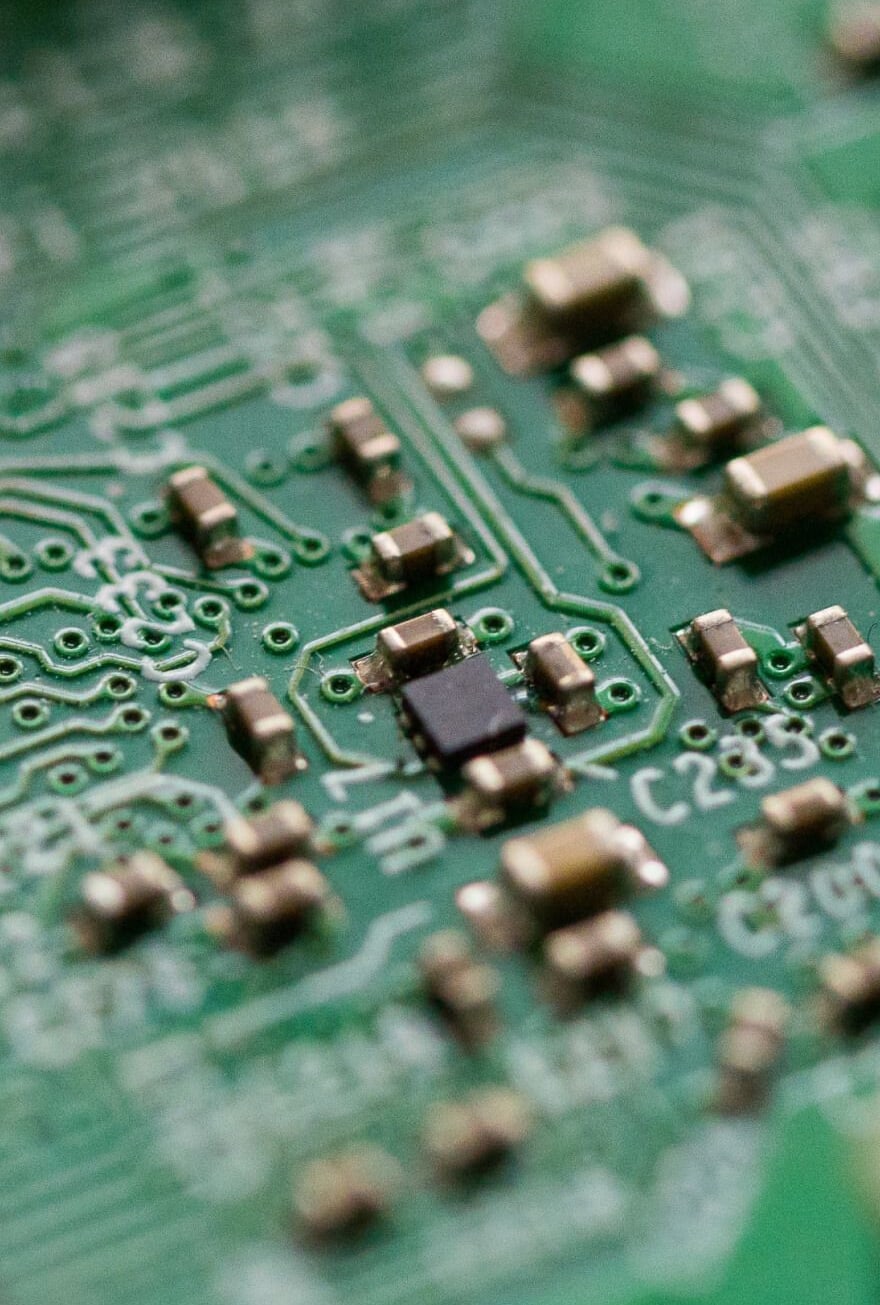Knowde Enhanced TDS
Identification & Functionality
- Chemical Family
- Product Type
- Technologies
- Product Families
Features & Benefits
- Ready-to-Use Product Features
- Key Attributes
- Clear, thin, flexible, and durable
- Protects against dust, humidity, salt spray, corrosion, and chemical fogs
- Protects against electrical arching, shorts, static discharges, and thermal shocks
- Contains a UV indicator for optical inspection
- Applied by brushing, dipping, manual and selective spraying
- Available in liquid, aerosol, and pen
- IPC and UL certified versions
- Key Attributes
- Maximum service temperature of 200 °C
- Fluoresces under UV-A light
- Suitable for use with selective coating equipment
- Corrosion resistant
- Brush
- 422C can be applied by brush for rework or touch-ups. Thinning is not required for most brush applications. Desired coating thickness can be achieved in a single application. Applied coating can be cured immediately.
Applications & Uses
- Markets
- Applications
- Application Method
- Applications
- Improves reliability, and lengthens the life of electronic circuitry
- Protects circuitry in coastal, tropical, marine, and other humid environments
- Allows electronic devices to operate in harsh environments
- Allows traces to be placed closer together by preventing arcing
- Selective Coating
For higher volume applications, coating can be applied via selective coating equipment. The settings listed below are recommendations and performance will vary with different brands.
Settings PVA Nordson Asymtek Platform PVA 650 SL 940E Valve FCM100 SC 280N Dilution None None Air Pressure N/Av 80 psi Fluid Pressure 17 psi 23 psi Dispense Height 10 mm 12.7 mm Pass Width 8 mm N/Av Coating Speed 400 mm/sec 400 mm/sec - Dip Coat
Use a Ford or Zahn cup to monitor the viscosity of the coating, as the solvent will evaporate over time.
- Hang the PCB on a dipping arm.
- Slowly lower the PCB into a tank and leave immersed in the coating for 2 min to allow penetration.
- Slowly withdraw the PCB from the tank at a rate of approximately 6" per minute.
- Let dry for 2 min before applying additional coats or 10 min before heat cure.
- Manual Spray Guns
Use a standard fluid nozzle gun with a minimum tip diameter of 0.8–1.0 mm. The settings listed below are recommendations; however, performance will vary with different brands::
Inlet Air flow Air cap 20–40 psi 10–15 SCFM 8–10 psi - Dilute 1-part coating to 1-part thinner (MG #4352 Thinner 2). Adjust ratio if required.
- Stir the coating gently, but thoroughly.
- Spray a test pattern to ensure good flow quality.
- Tilt the board at 45° and spray a thin even coat from a distance of 20–25 cm (8–10 in). Use spray-andrelease strokes with an even motion to avoid paint buildup in one spot. Start and end each stroke off the surface.
- Wait 5 min between coats to avoid trapping solvent.
- Rotate the board 90° and spray again to ensure good coverage.
- Apply additional coats until desired thickness is achieved (go to step 3).
- Let dry for 15 min at room temperature before applying heat cure.
- Recommended Preparation
- Clean the substrate with Isopropyl Alcohol, MG #824, so the surface is free of oils, dust, and other residues.
- Recommended Thinner
- 422C is ready to spray. Thinning is not required.
Properties
- Typical Properties
- Cured Properties
- Uncured Properties
- Cure Instructions
The product will not cure at room temperature. After letting sit for 15 minutes, cure the coating in an oven at one of these time/temperature options:
Temperature 65 °C 80 °C Time 20 minutes 10 minutes
| Value | Units | Test Method / Conditions | |
| Theoretical Coverage (at 25 Μm) | 58 900 | cm2/L | — |
| Recommended Film Thickness | 25-75 | μm | — |
| Minimum Recoat Time | 2 | minute | — |
| Dry Time to Handle (1 coat) | 10 | minute | — |
| Dry Time to Handle (2 coats) | 15 | minute | — |
| Value | Units | Test Method / Conditions | |
| Dielectric Withstand Voltage | min. 1500 | V | — |
| Service Temperature Range | -40 to 200 | °C | — |
| Dielectric Strength | 1 076 | V/mil | — |
| Resistivity | 3.5 x 10⁽¹³⁾ | Ω·cm | — |
| Glass Transition Temperature (Tg) | 31 | °C | — |
| CTE (Prior Tg) | 111 | ppm/˚C | — |
| Value | Units | Test Method / Conditions | |
| Calculated VOC | 271 | g/L | — |
| Density | 0.92 | g/mL | — |
| Viscosity (at 25˚C) | 14 | cP | — |
| Solid Content | 30 | % | — |
Regulatory & Compliance
- Chemical Inventories
- Certified
- Certified UL94 V-0
- Certified
Certified to UL94 V-0
Technical Details & Test Data
- Clean-up
- Clean spray system and equipment with MEK or acetone, MG # 434.
Packaging & Availability
- Available Packaging
Cat. No. Packaging Net Vol. Net Wt. 422C-P Pen 5 mL 4.61 g 422C-55ML Bottle 55 mL 50.7 g 422C-55MLCA Bottle 55 mL 50.7 g 422C-945ML Can 945 mL 871 g 422C-3.78L Can 3.78 L 3.48 kg 422C-19L Pail 18.9 L 17.4 kg
Storage & Handling
- Shelf Life
- 5 Years
- Storage and Handling
- Store between -5 and 40 ˚C in a in a dry area, away from sunlight (see SDS).

